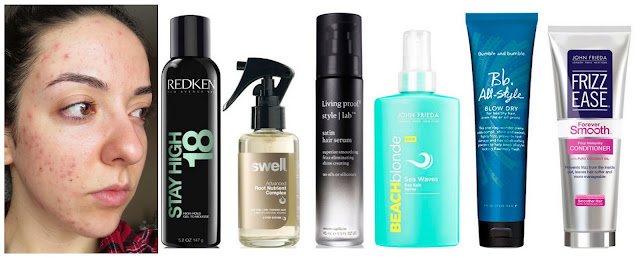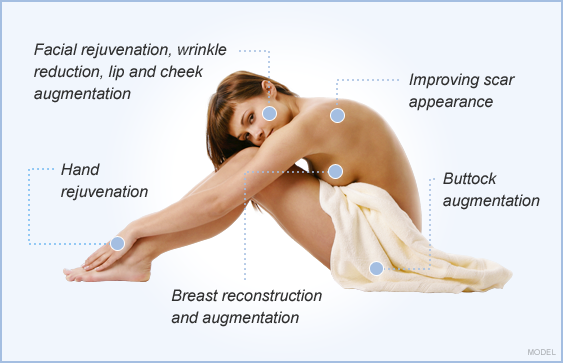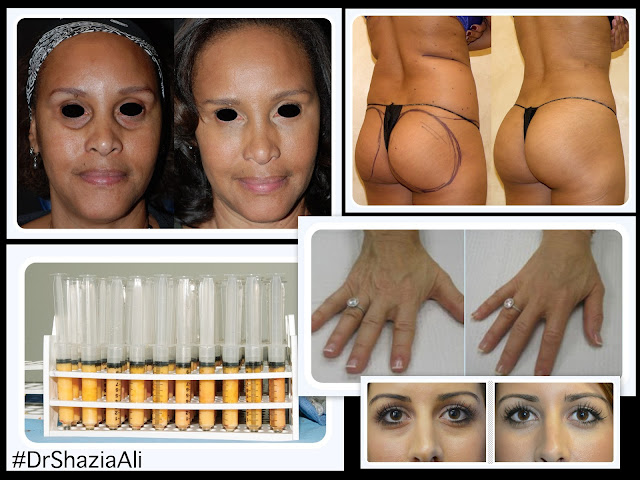As
the trend for polished silky smooth hair has gained popularity, so have the
reports of acne and skin breakouts shown a sharp surge — Is this a pure coincidence
or is there a real relationship between the two? Lets investigate,
you
recently started getting acne eruptions — on
skin examination the acne flare-ups are seen around the forehead, sides of
face, jaw-line and back — areas
right adjacent to the hair-line. Looking at your skin and hair care products your
skincare products are not labeled “Oily-combination skin” and you’re also using
hair straightening and frizz-fighting hair products. In dermatology we call this phenomenon “Pomade acne”; acne
flare-ups caused by certain chemicals used in the hair products. In the past it
used to be a common reporting among African women with very curly hair who were
using hair-relaxing pomades. With the rise of silky smooth hair trend now pomade
acne is making a huge comeback in all skin types and in both men as well as
women.
Hair
leave-in products like “smoothing serums”, “anti-frizz serums”, heat styling
sprays, “heat-protectants”, “thermal setting sprays”, and “shine sprays”
contain silicone-derived ingredients and oils to control frizz, add shine, and
detangle the hair. They work by coating the hair cuticle making it look and
feel smooth. These leave-in hair products have become an essential part of the
daily hair styling routine for people with difficult-to-manage hair, especially
those who have naturally curly hair or who are experiencing frizzy hair due to damage
caused by hair dyes and harsh hair styling procedures.
Men
who like slick hair and are using hair waxes and pomades to style their manes are
also reporting acne breakout as these hair products also contain greasy
wax-based ingredients that can clog pores, trap bacteria, and cause
inflammatory breakouts.
Most
people don’t correlate their acne breakouts with their hair products until a
skincare specialist points it out. Common culprits in hair products include
PVP/DMAPA acrylates, cyclopentasiloxane, panthenol, dimethicone, silicone,
Quaternium-70, oils, and petrolatum. These oily, waxy, hair products rub off on
the face directly or indirectly through the pillow at night. Ladies who wear
hijab also notice acne on the areas covered by the hijab as the cloth soaks in
the hair product and later it is rubbed off to the facial skin blocking pores
and casing acne.
Makeup
(foundations, primers, and popular “BB” creams) that promises more coverage and
smoother pore-less skin is also known to cause acne. Heavy-coverage skin
foundations and concealers contain cyclopentasiloxane and dimethicone and are
well known culprits as they contain the same ingredients as the hair products.
They serve a similar purpose: smoothing the skin and smoothing the hair. Both
should be avoided in acne-prone patients.
How To Prevent Pomade Acne?
The
only way to eliminate acne caused by hair products is to completely eliminate
the hair product from the daily routine. However, you can’t live without your
hair products, here are some tips to reduce the breakouts:
- Choose a hairstyle that keeps the hair away from the face, or wear hair up to avoid prolonged contact with the face, particularly while sleeping.
- Change pillowcase often (every day if possible), especially for side sleepers. Regardless of the fabric, pillowcases trap oil, dirt, and bacteria.
- Wash your hijab every day if possible to avoid hair products being absorbed by the head-scarf and rubbed of on the face.
- Shower at night and sleep with clean hair and clean skin.
- It’s always better to style hair before applying makeup. When done with the hair wash hands thoroughly to remove all hair products before touching the face skin. Always wash face before applying makeup.
- Cover the face prior to applying any hair sprays.
- Cover the hair at bedtime with a hair net if you still have hair products in it; however, tight head coverings can stimulate sweat and cause scalp breakouts.
As
a general rule, anyone with difficult-to-control acne, recalcitrant acne, or
acne in areas on the cheeks or hairline should eliminate these hair products in
their daily routine or avoid skin contact with these products. Additionally
using daily skincare suitable for oily and combination skin keeps natural skin
oils under check.




